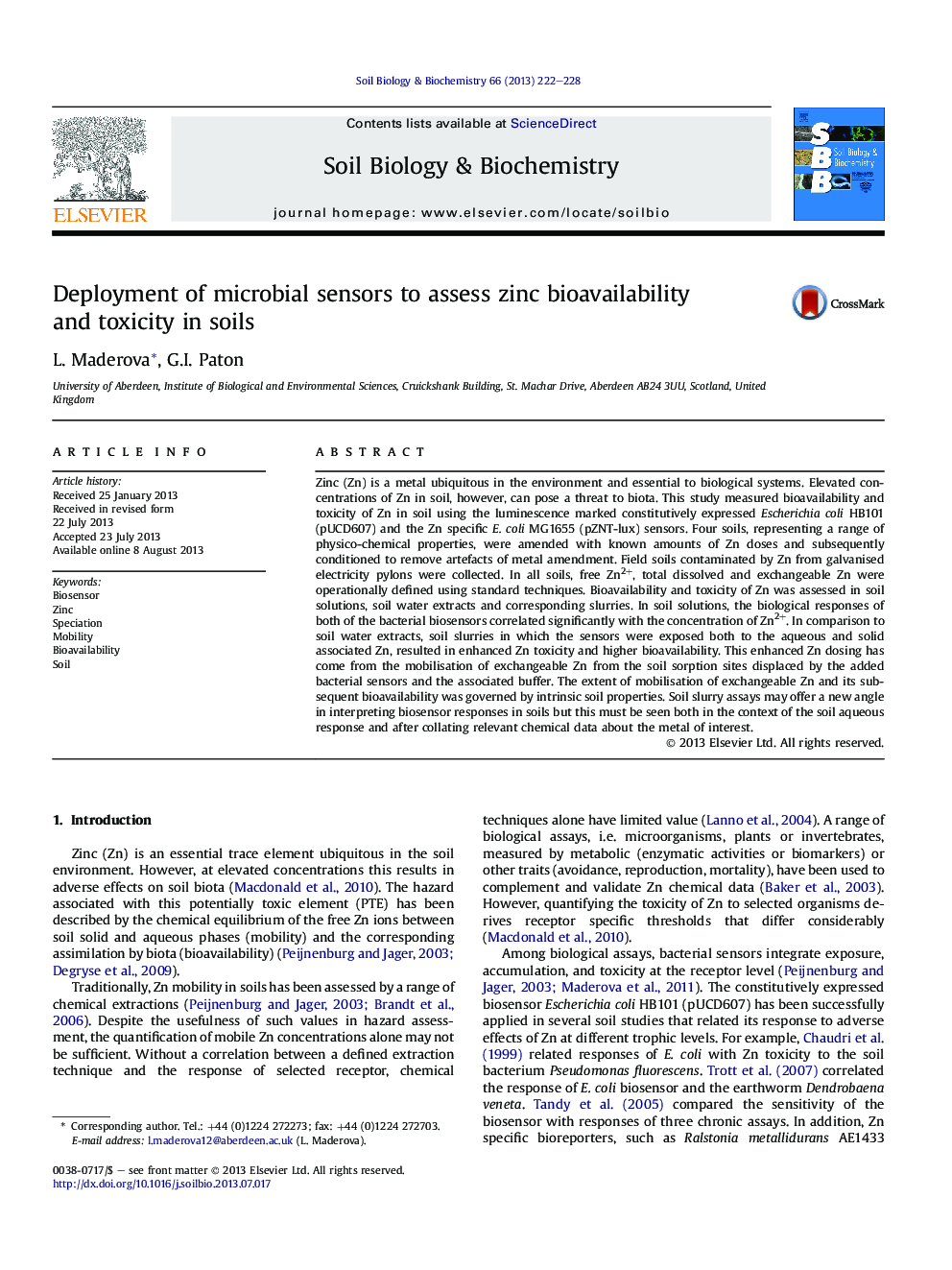| کد مقاله | کد نشریه | سال انتشار | مقاله انگلیسی | نسخه تمام متن |
|---|---|---|---|---|
| 2024701 | 1542618 | 2013 | 7 صفحه PDF | دانلود رایگان |

• No single chemical method exists that would simulate metal bioavailability in soils.
• Biosensor responses support the theory of Zn2+ toxicity in soil solutions.
• Exposure to soil slurries results in enhanced Zn toxicity and bioavailability.
• Enhanced Zn dosing is caused by the mobilisation of the soil exchangeable Zn.
• Bioreporters offer an alternative tool to study bioavailability of metals in soils.
Zinc (Zn) is a metal ubiquitous in the environment and essential to biological systems. Elevated concentrations of Zn in soil, however, can pose a threat to biota. This study measured bioavailability and toxicity of Zn in soil using the luminescence marked constitutively expressed Escherichia coli HB101 (pUCD607) and the Zn specific E. coli MG1655 (pZNT-lux) sensors. Four soils, representing a range of physico-chemical properties, were amended with known amounts of Zn doses and subsequently conditioned to remove artefacts of metal amendment. Field soils contaminated by Zn from galvanised electricity pylons were collected. In all soils, free Zn2+, total dissolved and exchangeable Zn were operationally defined using standard techniques. Bioavailability and toxicity of Zn was assessed in soil solutions, soil water extracts and corresponding slurries. In soil solutions, the biological responses of both of the bacterial biosensors correlated significantly with the concentration of Zn2+. In comparison to soil water extracts, soil slurries in which the sensors were exposed both to the aqueous and solid associated Zn, resulted in enhanced Zn toxicity and higher bioavailability. This enhanced Zn dosing has come from the mobilisation of exchangeable Zn from the soil sorption sites displaced by the added bacterial sensors and the associated buffer. The extent of mobilisation of exchangeable Zn and its subsequent bioavailability was governed by intrinsic soil properties. Soil slurry assays may offer a new angle in interpreting biosensor responses in soils but this must be seen both in the context of the soil aqueous response and after collating relevant chemical data about the metal of interest.
Journal: Soil Biology and Biochemistry - Volume 66, November 2013, Pages 222–228